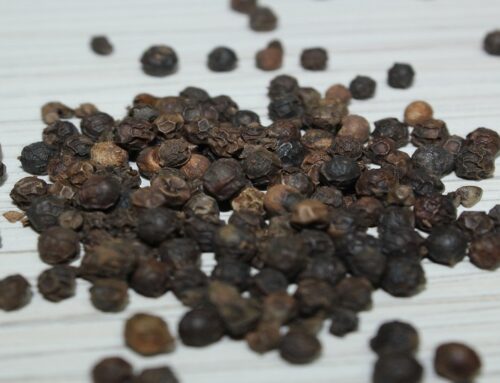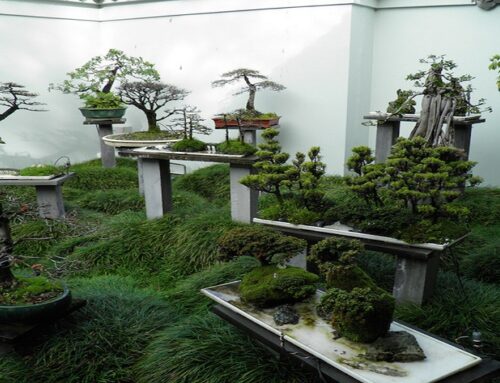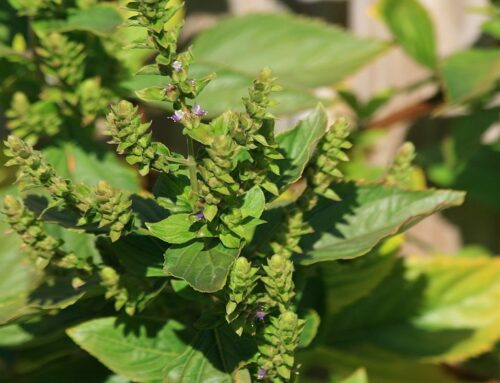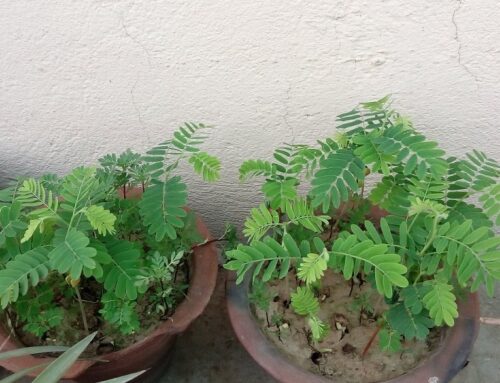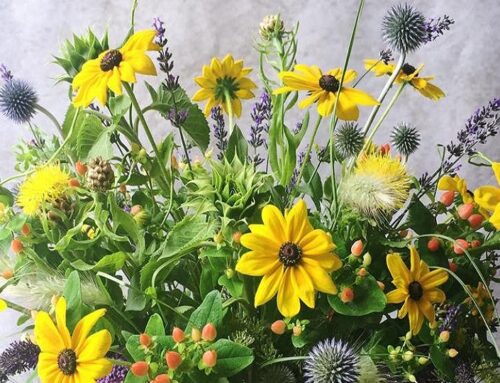Introduction
Carnations are mainly grown for their beautiful flowers having different meanings and long shelf life therefore can withstand long distance stress. The flowers are grown commercially world-wide by many florists. Although the crop is easy to grow yet it requires regular maintenance or after care to have high quality and high yield crop.
Climatic Requirements
Carnation is a temperate or cool crop. But it can be grown under controlled conditions throughout the year.
Sunlight
The crop requires minimum sunlight of 12 hours. For an ideal crop of carnation, it is advised to have sunlight of at least 4-5 hours daily.
Temperature and Humidity
Temperature range of 10-20 degree Celsius is recommended as ideal for carnation or in other words, day and night temperature ranges for the crop is 20 -25 and 10-15 degree Celsius respectively. The humidity range of 50-60% and critical photoperiod of 13 hours is considered very much favorable for a good crop.
Soil Requirements
A well drained and highly fertile soil having slight alkalinity with pH range of not more than 6.75 is required for god quality and high yield though other factors are also important. It is advised to undergo soil testing before growing carnations crop in the field as soil having much of manure and nitrogen is not considered suitable for the flowers. Too much of nitrogen in the soil will help in better vegetative growth but it affects flowering. Too much of nitrogen in the soil can also lead to calyx splitting problem in the crop. Thus well drained red loamy soil is considered ideal for carnation.
Site Selection and Field Preparation
As for all the commercial flower crop cultivations below points are advised to be taken into consideration for site selection:
- There should not be heavy traffic near the site and it should also be far away from factories and buildings to avoid pollution.
- Connectivity with roads is essential to reduce harvested crop loss
- Transportation facilities including services for loading and unloading facilities is must
- There should be storage and packaging facilities near to site.
- If possible attack of pests should be minimum
- The site should be fledged with irrigation facilities.
For commercial cultivation of the crop, planting is done using container system. In this system, beds are generally raised to 30cm and the size of bed should not be less than 1mX10m. The ratio of soil to farm yard manure should be 3:1 and the soil should also consist of mixture of bone-meal, potassium Sulphate, and calcium ammonium nitrate at the rate of 60 gram per square meter.
Propagation
Following are the propagation methods for cultivation of carnations:
Seed
Seeds are planted generally in the month of July which can be extended to October based on climatic conditions of the place. Sowing is done either in seed beds or seed pans thinly. It is very important to water the bed continuously for 5 to 8 days so that to avoid damping off in seedlings. Germination occurs after 5 to 8 days.
Seed Transplantation
Seeds are carefully transplanted when the seedling attains four leaf stages. The seedlings are picked from the bed or seed pan and transferred to nursery pot having size of 7.5 cm which is considered as second stage of transplanting. The soil mixture of these pots should contain equal parts of compost and soil. This is done to harden the seedlings for final stage of transplanting. Hardening is done to giving exposure to sunlight on gradual basis. These hardened seedlings are finally transplanted to either beds or pots of 25 cm when they attain size of 15 cm.
Cuttings
The side shoots having four leaves are cut. The height of this terminal cutting should not be more than 10 cm. Care is taken to select only those side shoots where flower buds are not yet developed. The leaves at the base have to be removed and then this is inserted in the rooting media which generally contains sand. It is strictly advised to avoid the leaves touching root media. Under ideal humidity conditions the roots develop from the cuttings. The time taken by each cutting for root development is about one month. These developed planting materials are then transferred to nursery pots of 7.5 cm for hardening.
Layering
Lateral shoots having no flower buds developed yet are ideal planting material for layering. The lower leaves from all the selected branches are removed completely and layering can be done either in pots or directly in soil. A sharp cut of tongue shape is made in between two nodes. The tongue should be open and is inserted in the soil while the terminal end should be above the ground. After the layers develop roots, these are separated from mother plants and transplanted in nursery pots as other seedlings.
Generally roots develop fast by layering as compared to cutting.
Plant Spacing
Generally closed spacing is preferred to obtain tall plants. Hence final transplanting should have planting space of 15 cm X 15 cm or 20 cm X 20 cm.
Fertilizer Schedule
To obtain best crop of carnation, application of balanced nutrients is recommended. This helps in uniform and better growth of flowers from each plant. Successful crop growers of carnation recommend Potassium Nitrate, Calcium Ammonium Nitrate, Superphosphate and Magnesium Sulphate for quality crop of carnation. All these chemicals should be applied at the rate of 0.76: 0.16:0.85 respectively.
Irrigation Schedule
Due to shallow root system of the crop, the soil should have enough moisture to hold the plant and supply regular water. Hence it is advised to keep soil moist till the cropping period gets complete. Irrigation frequency in carnation is determined on the basis of soil, its texture and environmental conditions of the site. However it is recommended to apply water twice in a week. Care should always be taken to keep the soil wet. When planted in pots, it is must to prevent water logging. For that charcoal pieces are added with the potting mixture.
After Care for Carnations
Since carnation is a very delicate crop to grow which requires utmost care till it reaches to the market for sale. A small mistake after planting the crop may lead to crop failure. The deterioration may either be due to pest infestation or irrigation and fertilization schedule or may be due to insufficient staking. Hence it is very important for a home gardener or a commercial grower to pay full attention after planting the crop.
Staking
The stem of the plant is weak and thin which bends easily form the nodes if proper staking is not done. This happens after the plant attains the height of 20 to 25 cm. The plants are supported with suitable stake like split bamboos. These stakes should be inserted in the soil which is near to plant. Since the flower is valued along with straight and long stems, a proper stakes should be inserted next to all the plants.
In addition to bamboo sticks, wire grids are also placed in order to support the plant. It depends upon duration of the crop. Thus, when a plant attains the height of 20 cm, one grid is provided and when it is of around 35 cm in height, a second grid is placed. The grid is made up of metallic wire strings woven with nylon mesh. The poles are inserted at every 2 meter distance and the poles at the end should be strong enough to support other poles. The metallic wire is then tied around the bed with support of poles and nylon meshes are weaved so as it covers the plant area like net. Since the stems put forth lot of pressure, care should be taken to tie the net strongly. In order to maintain the optimum growth of plant, it is generally advised to weave the mesh in increasing order. This means the area of the net should be less in the bottom which will be increased substantially with increase in height and width of plant. Generally, the bottom net should be of 10 X 10 cm, then there should be two nets of 12.5 X.12.5 cm and at the top the measurement of net should not be less than 15 X 15 cm to cover entire plant area.
Now readymade carnation staking materials are also available and used by commercial growers. These nets are made of plastic especially for carnation plants.
Pinching
Carnation plants are regularly pinched to increase number of branches and hence number of flowers as more number of flowers will generate more profit. The first pinching is done when the plant is of 20 to 25 cm in height. It is done by bending and removing the apical bud up to 7.5 cm by shaving blade. This operation will push development of side shoots. Not all the lateral shoots are encouraged to grow but around half of these shoots are removed and only 3 to 6 shoots are retained. This will help in quality flowering and easy harvesting.
De-shooting
This is also an important practice generally followed in carnation plants to remove weak shoots. These weak shoots if not removed, will make the plant dense and heavy. Thus these unwanted shoots are removed regularly.
Disbudding
Disbudding is done in order to retain only one apical bud in each stem. This is done to get large blooms with long stalks. Thus the flower buds on main stem are disbudded as soon as they attain pea size. If all the flower buds are allowed to develop, the size of main bud will reduce causing damage to quality of flowers. Hence in standard carnations this is an important practice to follow.
While disbudding is not done in spray or miniature carnations in order to make shoots look like a bouquet. The same is sent to market for sale.
Weed, Insect-Pest and Disease Management in Carnations
The flower is prone to al type of pests and there are chances of crop failure if proper management is not done.
Weed Management
Since Carnation needs moist soil and this condition invites unwanted grasses or weeds to grow. Weeds take away the nutrients which are required by carnation for its growth and development. Hence these plants should be kept clean by not allowing weeds to grow and utilize plant growth ingredients. Carnation should be kept weed free by regular weeding and hoeing. Hoeing is done in earlier stage of plant growth in order to provide aeration and root growth. Application of recommended amount of weedicides is suggested by most of the commercial growers. Proper time of application of fluchloralin at per hectare rate of 0.9 kg is at pre plant stage which hampers weed growth for about 80 days thereafter the plant does not provides space for weed to grow.
Insect Management
There are many insect pests which attack the crop at different stages of crop growth. Sometime if not carefully noticed, entire crop is damaged by insect infestation. Some of the major insects which are harmful to the crop and if not managed can lead to severe crop loss are:
Aphids
Aphids are sucking insects. These can be identified easily as they are black in color and found in groups. The nymph and adults suck the sap from leaves and disfigure the entire part of plant. These insects also leave sticky substance after sucking cell sap from the portion. Severe infestation leads to discoloration of leaf and thus curling of leaf.
The attack of aphids can chemically be controlled by application of Thiodon at the rate of 1 milliliter per liter of water.
Red Spider Mite
The attack is very common during hot weather. The mites suck the cell sap from underside of the leaf of carnation. This results in yellowing of leaf. The attack is noticed by having fine webs along with dusty coating on leaf surface. Ultimately the growth of plant stops and with severe infestation the plants gets disfigured.
Red spider mites are controlled by spraying Metasystox 25 EC at the rate of 1 milliliter per liter of water including use of common cultural practices of control.
Gram Hairy Caterpillar
It is a common pest of all the horticultural crops which causes severe losses to the crops. The larval stage of this insect damages the crop by feeding on flower bud of the plant. The adult lays eggs on surface of the leaf and after these eggs become larvae, they eat the petals and reproductive parts of the flower. Ultimately the flower gets damaged though bud may develop into full flower.
The attack of gram hairy caterpillar can chemically be controlled by using Quinaltaf at the rate of 1milliliter per liter of water.
Thrips
Thrips are also sucking insects which suck the cell sap from the leaf and turn it to yellow. The lack of cell sap results in drying and ultimately death of leaf. The attack is identified by having patchy marks o the leaf along with black specks and folding.
The chemical control measures for thrips are spraying of Thiodon at the rate of 1 milliliter per liter of water.
Disease Management in Carnations
Carnation plants attacked by diseases can cause severe crop loss to the growers. The diseases if not controlled at early stage cover the entire crop area and badly affect the commercial growers. Some of the important diseases which infect the crop most commonly are included in this book.
Alternaria Leaf Spot
It is caused by fungus. The fungus infects the entire foliage of the plant and if the damage increases, it leads to plant wilting followed by death of the plant. The disease is identified by black spots on leaves and stem. This disease causes premature death of the plant.
To prevent the damage caused by this fungus, chemical control is using fungicide Captan at the rate of 2 gram per liter of water.
Bacterial Wilt
It is caused by bacterial Pseudomonas caryophylli. The symptoms appear similar to one caused by Fusarium oxysporum the difference is oozing out of sticky substance from infected portion of the plant. The disease mainly infects stems and roots of the plant. Heavy infectivity results in death of the plant.
Chemical control measure to get rid of this disease if spray of Bavistin at the rate of 2 gram per liter of water which helps in effective management of crop and helps in minimizing the damage.
As both Fusarium Wilt and Bacterial Wilt show same symptoms, chemical control measure for both the diseases is similar.
Fusarium Wilt
Study clearly indicates the huge crop loss due to severe attack of Fusarium Wilt. It is a soil borne fungus which mostly appears during hot weather and high humidity. The major symptom of identification of attack of this disease is yellowing of leaves which results in wilting of whole plant.
Chemically the disease can be controlled by spraying Bavistin at the rate of 2 gram per liter of water.
Apart from chemical control for these diseases proper cultural practices should also be followed to control their spread.
Physiological Disorders in Carnations
Carnations are also affected by physiological disorders due to internal or external factors. The two important disorders of this crop which cause serious loss are Calyx Splitting and Curly Tip.
Calyx Splitting
There are many causes of Calyx Splitting. It may be due to genetical factors (too many petals), environmental factors (irregular temperature), and type of cultural practices adapted or nutritional misbalance (More amount of nitrogen). Those cultivars which bear too many petals are also prone to this disorder. The symptoms are identified when calyx split half or sometimes completely causing no support to petals resulting to their bending. Ultimately structure of flower gets distorted.
To reduce this disorder, cultivars which are less prone to this disorder are selected. In addition to this, managing irregularity of temperature and application of recommended amount of fertilizers are also remedies to this disorder. Tying a rubber band or plastic strip around the calyx also helps in reducing the loss due to Calyx Splitting.
Curly Tip
Favorable conditions which attract Curly Tip are poor light including other adverse conditions. In addition, water stress and deficiency of potassium are also possible causes for this disorder. This affects the growing tip of plant which gets curled and distort. The tips of the young shoots of carnation plant fail to separate and continue to grow jointly which results in curling of that portion.
Common Methods of Pest Control
Before using chemical methods of controlling pests, it is important to apply measures other than spraying chemicals. Though the chemicals stop further damages by killing the root of the pests yet it leaves its residue in the soil. Gradually this leftover mixes with soil and convert the soil into media which becomes resistant to pests. Thereafter this residue becomes hazardous for crop and invites pest to attack the crop. This also results in complete damage of soil as the chemicals used for pest control are poisonous for soil organisms. Hence it is always advised to control the pests using methods other than chemical measures.
Some of the common practices which a gardener or commercial grower should always adapt while planting any crop are:
Deep Ploughing At the Time of Field Preparation
This helps the soil to get exposed to sun and kills organisms that are reducing the productivity and fertility of soil. This also kills soil bore larvae and microorganisms which attack the crop causing losses.
Soil Sterilization
It is one of the best control measures against diseases like Fusarium Wilt. Soil is sterilized using suitable compounds like Formalin or Formaldehyde. The recommended amount is mixed with water and sprayed over the soil. The soil is then covered with black plastic or mulch for one or two days so that the chemical completely spreads over the soil and kills the harmful organisms.
Removal of Infected Plant Parts
This cultural practice should be followed on regular basis. Either a home gardener or a commercial grower, removing affected plant parts help in minimization of disease spread thus controls the invasion. All the insect and disease affected plant parts including infected leaves, roots, flowers and fruits are removed from the planting area and burnt. This will clean the area and also controls the further spread.
Hoeing
Hoeing helps in cleaning the plant spacing, removal of weeds and better air and water circulation around the plant area. Thus it is an important cultural practice to be adapted for better yield and growth of flowers.
Application of Fully Useable Farm Yard Manure
The Farm Yard Manure used at the time of field preparation should be completely decomposed as un-decomposed or semi-decomposed manure invites attack of insects and diseases. Incomplete decomposition is also not as effective.
Harvesting Flowers
The blooms for sale as cut flowers are produced after 16 to 20 weeks (or 4 to 6 months after sowing) in Carnation crop. The same also varies according to pinching done. For example in standard carnation, side shoots are pinched whereas for spray or miniature, the apical bud is pinched for getting a bouquet like shape of the plant. If the flowers are to be sent to distant market, the ideal stage of harvesting is when 1.25 to 2.5 cm of the petal length starts showing color. However in case for local market, the flowers are harvested when around three-fourth of the flower opens. The best method of harvesting the cut flowers is by hand as the stem is soft and easily breaks.
Just after harvesting, the flowers are kept in clean water and dipped up to half of their stem. This will help in retaining the water.
Yield
The economic value of carnation is very high where the average yield is 8 to 10 stalks per plant per year.
We have a book on ‘Carnations‘….
Check out our publishing services here…
We publish top quality videos on various ‘Food & Agriculture’ topics. You may subscribe our video channel here…


